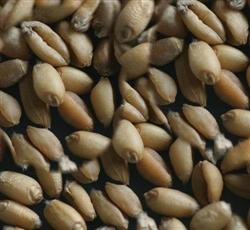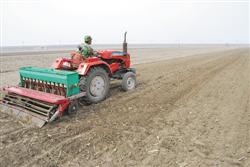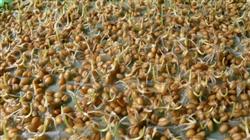Teach you how to make wheat seeds safe over the summer.

The following teaches you how to make wheat seeds safe for reference: wheat seeds are harvested to sow in summer with high temperature and humidity, and improper management of the storage period will lead to the decline of seed quality, reduce the germination rate and affect the sowing quality. This puts forward high requirements for the over-summer storage of wheat seeds, and special attention should be paid to the following aspects during the over-summer storage of wheat seeds. 1. Moisture: water is one of the three indispensable elements of seed germination. The water content of wheat seeds directly affects the safe storage of wheat seeds. The national standard of storage moisture of wheat seeds is 12.5%. The seeds must be strictly checked when entering the storage. if they are subjected to continuous overcast rain or disastrous climate, they should not exceed 13.5% at most. After entering the warehouse, the seed moisture should be tested strictly and tested regularly. It is generally controlled in the first three months, that is, from June to August, once every semimonthly and once a month after September. If there is continuous rain and the quality of the warehouse is not up to standard, it should be inspected frequently. Bulk seeds, if the quantity is large, first divide into seed batches, and then carry out cutting samples, that is, in the four corners of the warehouse (distance from the edge 10~20cm), five points in the middle, upper, middle and lower three layers (upper and lower distance surface, bottom 20cm), totaling 15:00, the moisture content is determined according to the prescribed operation method after cutting samples; bagged seeds, after dividing seed batches, cutting samples according to five-point or chessboard method to determine moisture. 2. Temperature: temperature is an important factor affecting seed storage quality. Years of practice has proved that wheat seeds with temperature below 20 ℃ and moisture below 12.5% can ensure safe storage; when the seed temperature exceeds 25 ℃ and moisture is above 14%, the seeds will breathe vigorously, cause seed heap fever, decrease vitality and reduce seed use value. The stored seeds should adhere to the seed temperature detection, which is generally controlled in the three months after storage, that is, from June to August, three times a month and twice a month after September. Three points are set up in different parts of the warehouse, which are divided into two layers (the middle two points and the next one) to measure and record, and compare and analyze the air temperature and warehouse temperature. It is required that the air temperature in summer and autumn is higher than the seed temperature than the warehouse temperature, and the seed temperature in autumn and winter is higher than the warehouse temperature than the air temperature. If the seed temperature in summer is higher than the air temperature, it means that the seed is obviously hot, and measures such as turning the warehouse and drying should be taken immediately to prevent mildew. 3. Pest control: there are many kinds of pests that harm the storage of wheat seeds. There are mainly wheat moths, corn elephants, big grain thieves and stupid grains in our county. The monitoring of seed pests must be strengthened during the storage period of wheat seeds. The general temperature is about 25 ℃, and the inspection is carried out every 20 days. The cutting sample method is the same as the moisture determination method, and the sample quantity is 1 kg. The sample is screened with aluminum sleeve screen, carefully observed, calculated the number of insects per kilogram, and timely control measures are taken according to the situation. Storage pests are generally controlled by warehouse closed fumigation. The period from the storage of wheat seeds to August is a period of high temperature and humidity. At this time, fumigation and sterilization should be combined with closed storage. Warehouse insects are generally fumigated with aluminum phosphide. First of all, the windows and doors of the warehouse should be carefully sealed with plastic film, newspapers, paste and other tools; the total dosage of fumigation warehouse should be calculated according to the dosage of 5g per cubic meter (including space and seeds); the fumigation points should be evenly distributed, and the fumigation time is generally 7MW for 10 days. Then open the warehouse and change the air. For bagged seeds, aluminum phosphide tablets can be used to calculate the dosage, and the tablets can be evenly stuffed into the seed bag and fumigated to kill insects. After the fumigant is sealed for a week, open the warehouse and change the air. Drug fumigation can not only kill pests, but also reduce seed moisture. However, the moisture content of wheat seeds in the warehouse should not be higher than 14% during fumigation, otherwise it will affect the germination rate. 4. Anti-mildew: wheat seeds are easy to heat and mildew if they are not stored properly. There are two reasons for the fever of wheat seeds: one is that the water content exceeds the standard when it is stored, which results in a large range of fever and mildew and a large loss. Second, the airtight performance of the warehouse is poor, and the moisture absorption and heat of wheat grains cause mildew, which is first on the surface of the seed pile, and then gradually diffuses and permeates. Through the detection of seed moisture and temperature, timely detection and early response measures. For the fever of wheat seeds caused by the first situation mentioned above, the seeds should be dried out of the warehouse on a sunny day to make its water content reach the prescribed standard; for the fever of wheat caused by the second case, the airtight work of the warehouse should be strengthened in cloudy and rainy weather. sunny weather and timely ventilation. Click to get more wheat planting technology click to get more grain planting technology
- Prev

What method is there to deal with wheat seeds sown in autumn?
What method is there to deal with wheat seeds sown in autumn? Please give guidance to sow wheat seeds in autumn to achieve the following points: first, insect control treatment. For wheat underground pests, such as mole cricket, grub, golden needle worm, etc., 50% 1605 emulsion 0.5kg, water 50kg, seed dressing 500kg, soaking for 4 hours, or 75% octanesulfide can be used.
- Next

Teach you how to keep wheat seeds.
It is also the wheat harvest season of the year, the following teaches you how to keep wheat seeds: the quality of wheat seeds is the basis and key to a bumper wheat harvest. When farmers choose varieties, they should, in principle, go to qualified seed suppliers to buy wheat varieties approved by the state. Some farmers use their own wheat seeds to achieve five points. ...
Related
- The first cup of black tea in spring, the flavor and history of tea gardens in Kenya, Africa
- The computer can not only choose potatoes, but also grow tea rice. AI will grow winter oolong tea champion.
- It is not only the inflated tea bitten by insects, but also engraved with the four seasons tea in Beipu.
- The Oriental Beauty Tea Festival in Zhuxian County takes the stage at the weekend to experience the plus-size feast of oil tea.
- & quot; Oriental Beauty Tea & Exploration of Emei in Hsinchu, the hometown of quot;
- The new variety of strawberry "Tainong 1" dessert is the first choice with mellow aroma. Crimson gorgeous
- History of Tea in Taiwan: from Wild Inner Mountain to Export Tea Garden
- Two types of Taiwan Oriental Beauty Black Tea won the British three-Star Award for Childhood Tea Xiang Zhang Jiaqi changed from pilot to champion tea maker.
- Banana species and varieties: the planting history of Taiwan Xianren banana and dwarf banana is long, is banana disease resistant?
- Coffee planting Technology: Qianjie Coffee from Seedling to harvesting

